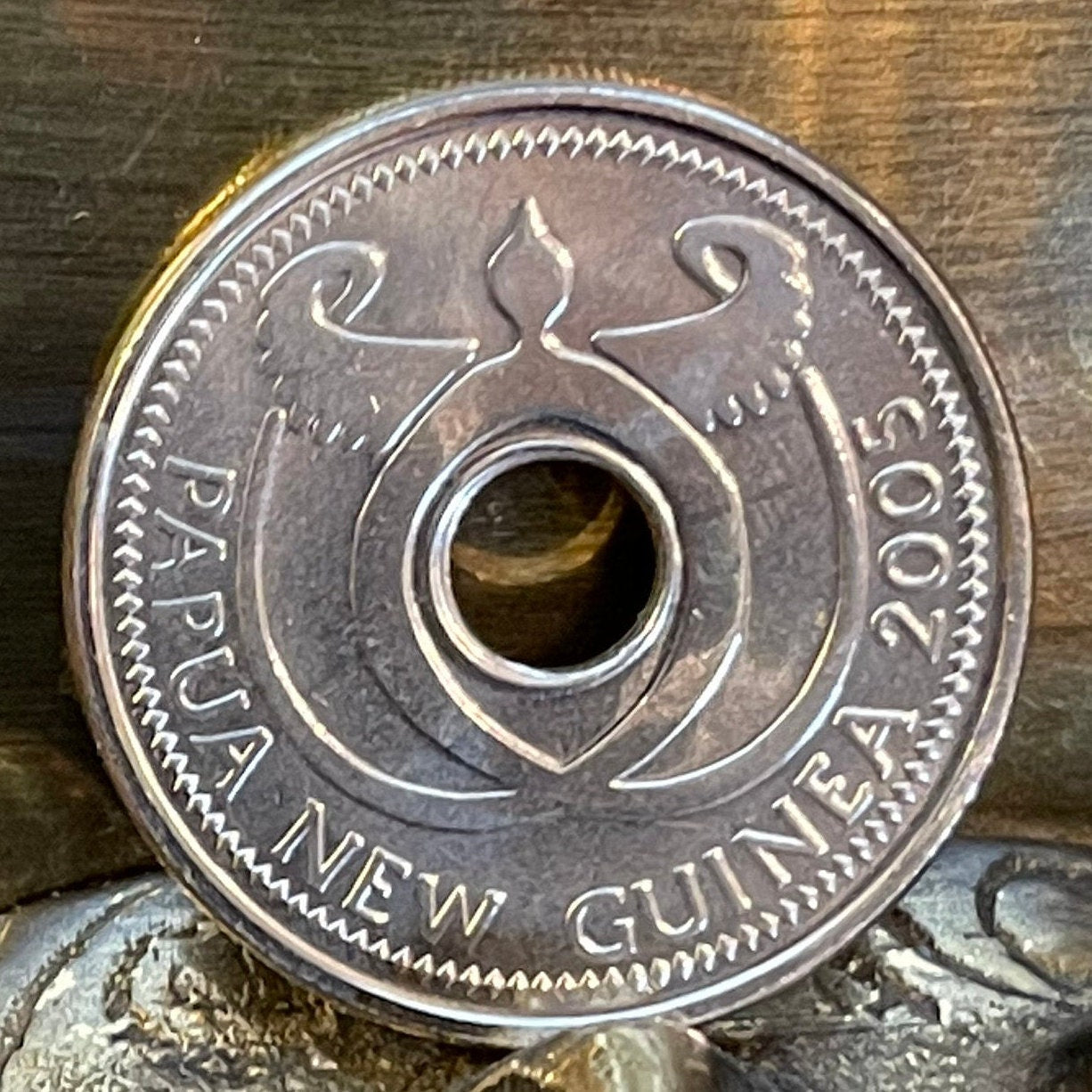elemintalshop
New Guinea Crocodiles 1 Kina Papua New Guinea Authentic Coin Money for Jewelry and Craft Making
New Guinea Crocodiles 1 Kina Papua New Guinea Authentic Coin Money for Jewelry and Craft Making
Couldn't load pickup availability
New Guinea Crocodiles 1 Kina Papua New Guinea Authentic Coin Charm for Jewelry and Craft Making
Obverse: Bank of Papua New Guinea logo
Lettering: PAPUA NEW GUINEA
Reverse: Crocodiles flank center hole.
Lettering: K1
Features
Issuer Papua New Guinea
Queen Elizabeth II (1975-2022)
Type Standard circulation coin
Years 2005-2010
Value 1 Kina
1 PGK = USD 0.28
Currency Kina (1975-date)
Composition Nickel plated steel
Weight 11.13 g
Diameter 30 mm
Thickness 2.2 mm
Shape Round with a round hole
Technique Milled
Orientation Medal alignment ↑↑
Number N# 9798
References KM# 6b
Wikipedia:
The New Guinea crocodile (Crocodylus novaeguineae) is a small species of crocodile found on the island of New Guinea north of the mountain ridge that runs along the centre of the island. The population found south of the mountain ridge, formerly considered a genetically distinct population, is now considered a distinct species, Hall's New Guinea crocodile (C. halli). In the past it included the Philippine crocodile, C. n. mindorensis, as a subspecies, but today they are regarded as separate species. The habitat of the New Guinea crocodile is mostly freshwater swamps and lakes. It is most active at night when it feeds on fish and a range of other small animals. A female crocodile lays a clutch of eggs in a nest composed of vegetation and she lies up nearby to guard the nest. There is some degree of parental care for newly hatched juveniles. This crocodile was over-hunted for its valuable skin in the mid 20th century, but conservation measures have since been put in place, it is reared in ranches and the International Union for Conservation of Nature (IUCN) lists it as being of "Least Concern".
The New Guinea crocodile grows to a length of up to 3.5 m (11 ft) for males and 2.7 m (8.9 ft) for females, although most specimens are smaller. The body ranges from grey to brown in colour, with darker bandings on the tail and body which become less noticeable as the animal grows. Longitudinal ridges in front of the eyes and some granular scales on the back of the neck between four large scales are distinctive features of this species. There are some differences between the northerly and southerly populations in the morphology of the skull and the arrangement of the scales. The snout is pointed and relatively narrow during juvenile stages and becomes wider as the animal matures. The New Guinea crocodile bears a physical similarity to the nearby Philippine crocodile (C. mindorensis) and Siamese crocodile (C. siamensis). The colouring is similar to that of the freshwater crocodile (Crocodylus johnsoni) of northern Australia, but the snout is somewhat shorter and broader.
Share








& good transaction too. Thank you
It was perfect! Great quality.
5 stars review from Kelly







